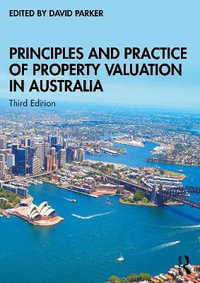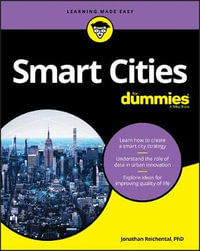| List of Contributors | |
| Foreword | |
| The context of valuation practice in Europe | |
| Introduction | |
| Investment valuation: pricing and appraisal of worth | |
| The cultural problem and the valuation process | |
| Organisation of the book | |
| References | |
| Theoretical basis of valuation | |
| Concepts and models of value | |
| Introduction | |
| Concepts of value | |
| The estimation of exchange price | |
| Market value and cost | |
| Valuation models | |
| Conclusion | |
| Further reading | |
| Valuation of investment properties for acquisition, disposal and performance measurement | |
| Property investment | |
| Property investment at the portfolio level | |
| Property investment appraisal at the individual property level | |
| Appraial information needs | |
| Property investment appraisal - concluding comments | |
| References | |
| Valuation for loan security | |
| Finance mechanisms | |
| Characteristics of loan requirements | |
| Objectives of valuation | |
| Relationships between the valuer, lender and borrower | |
| Realising security in case of default | |
| Valuation of property with development potential | |
| Database management | |
| Fee levels | |
| Reporting | |
| Conclusion | |
| References | |
| Case law | |
| Legislation | |
| Valuation practice in Europe | |
| Belgium | |
| General background | |
| Property rights | |
| Education and the valuation process | |
| Purpose of valuation and valuation methodology | |
| Application of valuation | |
| Case valuation for investment purposes | |
| Conclusion | |
| References | |
| France | |
| Overview of valuations | |
| Valuation standards | |
| Contextual influences | |
| Property tenure | |
| Bases of valuation | |
| Valuation methods | |
| Transaction costs | |
| Database management | |
| Conclusion | |
| References | |
| Germany | |
| Valuation for investment | |
| Loan security valuation | |
| The open-end investment funds | |
| Closed-end funds | |
| Valuers | |
| Agency and brokerage | |
| Education | |
| Professional bodies | |
| Valuer's liabilities | |
| Valuer's fee levels | |
| Property tenure in Germany | |
| German legislation | |
| Definitions of value | |
| Cultural differences (valuation UK versus FRG) | |
| Database management: data collection, reliability and methods of measurement | |
| Market transparency | |
| Conclusion | |
| References | |
| Legislation | |
| Italy | |
| Legislative and regulatory context | |
| Contextual influence | |
| Gross to net adjustment | |
| Theoretical basis of valuation techniques | |
| Database management - sources of data | |
| Practical application of techniques | |
| Conclusion | |
| References | |
| The Netherlands | |
| Market structure and brokerage activities | |
| Market data | |
| The rental agreement | |
| The basis of valuation methods | |
| Valuation for mortgage loans | |
| Conclusion | |
| References | |
| Norway | |
| The valuation profession | |
| Legislation and regulatory provisions | |
| Property tenure | |
| Theoretical basis of valuation techniques | |
| Valuation methods | |
| Database management | |
| Valuation reports | |
| Conclusion | |
| Further reading | |
| Professional bodies | |
| Portugal | |
| Introduction | |
| Geographical and historical background | |
| Valuation practice and techniques 1950-1973 | |
| Valuation for commercial purposes 1973-1990 | |
| The development of a market for commercial valuations | |
| Current practice | |
| Valuation appraisals | |
| Conclusion | |
| Spain | |
| Valuation practice | |
| Bases of valuation | |
| Valuation guidelines | |
| Valuation methods | |
| Valuation process | |
| Property analysis | |
| Market analysis | |
| Conclusion | |
| References | |
| Sweden | |
| The market for valuation services | |
| Legislat | |
| Detailed Contents | |
| Preface | |
| Thinking and Writing-A Critical Connection | |
| Thinking Made Visible | |
| The Power of Writing Persuasively | |
| Critical Thinking | |
| Audience and Purpose | |
| Writing Assignment 1. Considering Your Audience | |
| Writing as a Process | |
| Writing Assignment 2. Your Writing Process | |
| He or She? | |
| What You Can Expect from This Book | |
| Enjoying The Challenge of Thinking and Writing | |
| Key Terms | |
| Inference-Critical Thought | |
| What Is an Inference? | |
| What Is a Fact? | |
| What Is a Judgment? | |
| Achieving a Balance Between Inference and Facts | |
| Reading Critically | |
| Writing Assignment 3. Reconstructing the Lost Tribe | |
| Making Inferences-Analyzing Images | |
| Making Inferences-Writing About Fiction | |
| Writing Assignment 4. Interpreting Fiction | |
| Summary | |
| Key Terms | |
| The Structure of Argument | |
| Premises and Conclusions | |
| Distinguishing Between Premises and Conclusions | |
| Standard Form | |
| Ambiguous Argument Structure | |
| Argument and Explanation-Distinctions | |
| Argument Structure, Logical Essay Organization, and Revision | |
| Summaries | |
| Writing Assignment 5. Constructing a Summary and Response | |
| Plagiarism | |
| Logical Relationships Between Ideas-Joining Words | |
| Hidden Assumptions in Argument | |
| Writing Assignment 8. A Letter of Application | |
| Summary | |
| Key Terms | |
| Written Argument | |
| Focusing Your Topic | |
| Shaping a Written Argument-Rhetorical Strategies | |
| A Dialectical Approach to Argument | |
| Logical Joining of Contrasting and Concessive Ideas | |
| More on Coherence | |
| Sample Essays | |
| Four Approaches to Writing Arguments | |
| Writing Assignment 7. Arguing Both Sides of an Issue | |
| Writing Assignment 8. Taking a Stand | |
| Writing Assignment 10. Exploring an Argument in Depth | |
| Writing Assignment 11. Collaborating on a Complex Issue | |
| Summary | |
| Key Terms | |
| The Language of Argument-Definition | |
| Logical Definition | |
| Definition and the Social Sciences | |
| Definition and Perception | |
| Language: An Abstract System of Symbols | |
| Writing Assignment 11. Composing an Extended Definition of an Abstract Term | |
| Stipulating Personal Meaning | |
| Writing Assignment 12. Creating a New Word | |
| Summary | |
| Key Terms | |
| Fallacious Arguments | |
| What Is a Fallacious Argument? | |
| Writing Assignment 13. Analyzing an Extended Argument | |
| Key Terms | |
| Deductive and Inductive Argument | |
| Key Distinctions | |
| The Relationship Between Induction and Deduction | |
| Deductive Reasoning | |
| Inductive Reasoning | |
| Writing Assignment 14. Questioning Generalizations | |
| Writing Assignment 15. Conducting a Survey: A Collaborative Project | |
| Summary | |
| Key Terms | |
| The Language of Argument-Style | |
| Sentence Length | |
| Appositives-A Strategy for Defining Terms Within the Sentence | |
| Verbal Modifiers-A Strategy for Combining and Expanding Sentences | |
| Parallelism: A Strategy for Coherence and Balance | |
| Sentence Focus-Techniques for Sharpening the Flow of Ideas | |
| Concrete Subjects | |
| Revision | |
| Writing Assignment 16. Revising an Essay | |
| Summary | |
| Key Terms | |
| Research and Documentation | |
| Research | |
| Documentation | |
| Formatting Your Paper | |
| A Reminder | |
| Sample Research Paper | |
| Credits | |
| Index | |
| Guide to Readings | |
| Thinking and Writing-A Critical Connection | |
| "The Problem with New Data," | |
| "The Bird," | |
| "The Writer," | |
| Inference-Critical Thought | |
| "The Facts of Media Life," | |
| "The Totleigh Riddles," | |
| "Mirror," | |
| "Metaphors," | |
| "The Story of an Hour," | |
| "Hostess," | |
| The Structure of Argument | |
| "Walker Guilty," | |
| "Supreme Court Attacks Students' Rights," | |
| "Indivisible? Wanna Bet?," | |
| "Other People's Words," | |
| Written Argument | |
| "Rap Takes a Bum Rap," | |
| "A Case for Affirmative Action," | |
| "Gender Vendors," | |
| The Language of Argument-Definition | |
| "The Voice You Hear Whe | |
| Table of Contents provided by Publisher. All Rights Reserved. |
























